Thurs, Jan 8, 7:00pm at Barlow Community Center. Former park superintendent John Debo discusses Cuyahoga Valley National Park at 50.
Tour #1: A Walking Tour of Hudson’s Historic Main Street & Its Nearby Neighbors
Approximate Walking Time: 30-40 minutes
Many of the areas and buildings on this tour of Hudson’s downtown residential neighborhood are listed in the National Register of Historic Places. Those properties with the white ”HHA” marker have been researched and authenticated by Hudson Heritage Association and may be noteworthy for their architecture, their past ownership or for the activities that took place within them. The markers typically carry the name of the original owner of the property.
This area is blessed with a range of architecture representative of the Western Reserve and other styles of significance. Be sure to note the features and elements of each building that help make Hudson such a rich reflection of its past and its citizenry – a storied group of individuals who were determined to build a community reflecting the elegance of New England in the Ohio wilderness.
Read A Brief History of Hudson
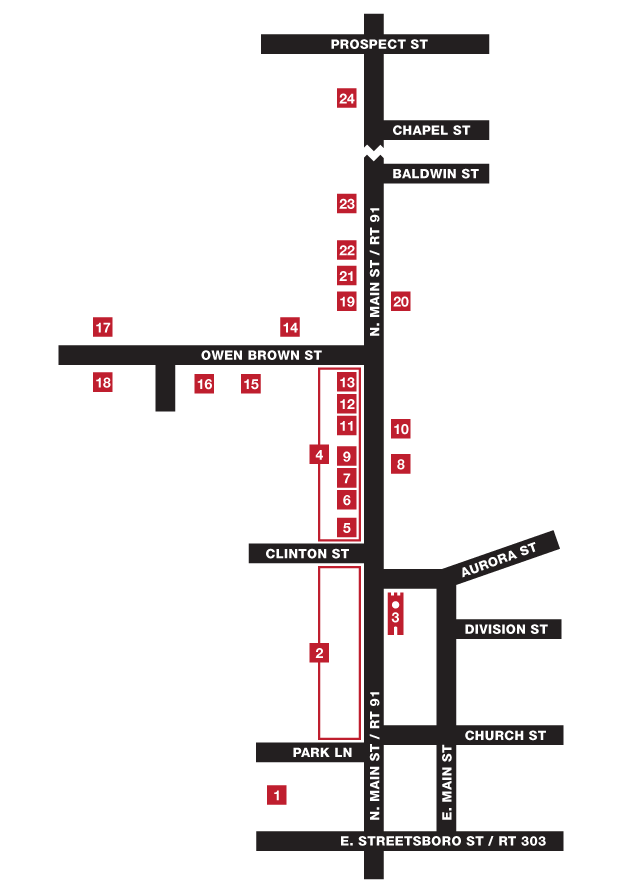
For a better mobile experience, click the map to view it in its own window, to reduce scrolling.
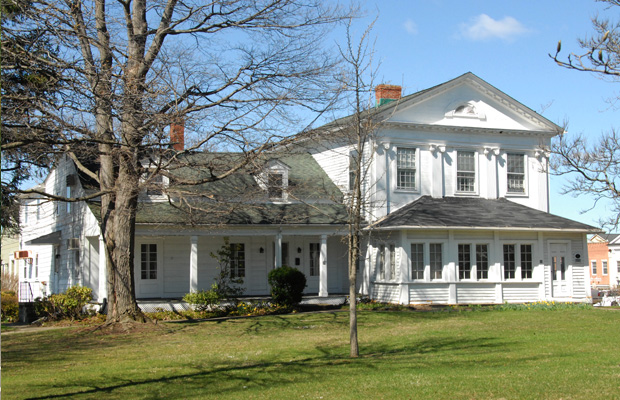 1. 36 North Main Street (1825), Baldwin-Buss-Merino House
1. 36 North Main Street (1825), Baldwin-Buss-Merino House
This high-style Federal dwelling was designed by Lemuel Porter for Augustus Baldwin, one of four brothers who settled in Hudson from Goshen, Connecticut. Their father, Stephen, was one of the five original owners of Hudson Township. The enclosed front porch is a 20th century addition; the large, two-story addition on the southwest corner was built in the 1940s for rental offices.
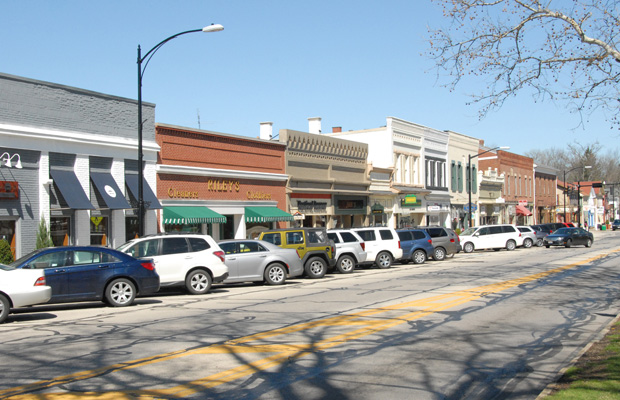 2. North Main Street, Park Lane to Clinton Street
2. North Main Street, Park Lane to Clinton Street
The fire that started in Lockhart’s Saloon (84 North Main Street) on the night of April 28, 1892, destroyed all of the wooden buildings then standing in this block. Only a dawn rainstorm and the brick walls of Adelphian Hall, which stood on the corner of Clinton Street, stopped the flames from spreading north. Courageously, many of the burned-out merchants rebuilt before the year was out, this time with brick. A 1911 fire in turn took the building that had replaced Adelphian Hall. The present building on the site was erected by J. W. Ellsworth in 1912. It served as the home of Saywell’s Drug Store, famous for its marble soda fountain, until 2005.
 3. North Main and Aurora Streets (1912), Clock Tower
3. North Main and Aurora Streets (1912), Clock Tower
This brick tower, with its clock, chimes and watering troughs, was given to Hudson by the town’s benefactor, James W. Ellsworth. It has been Hudson’s symbol since 1912.
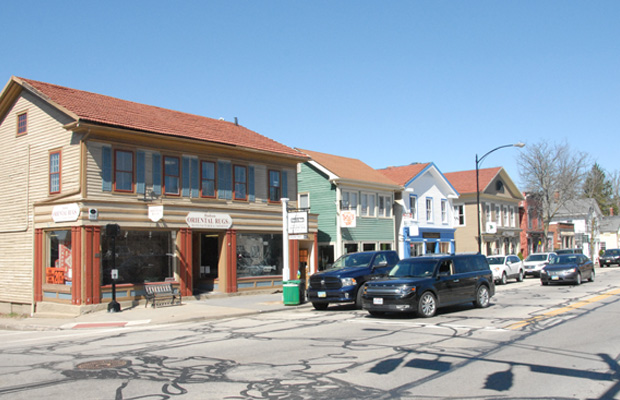 4. North Main Street (Clinton Street to Owen Brown)
4. North Main Street (Clinton Street to Owen Brown)
Largely built in the first half of the 19th century, these freestanding stores make up one of the oldest commercial blocks remaining in Ohio. They survived the tragic 1892 fire by virtue of the Clinton Street fire break and a fortuitous rain storm.
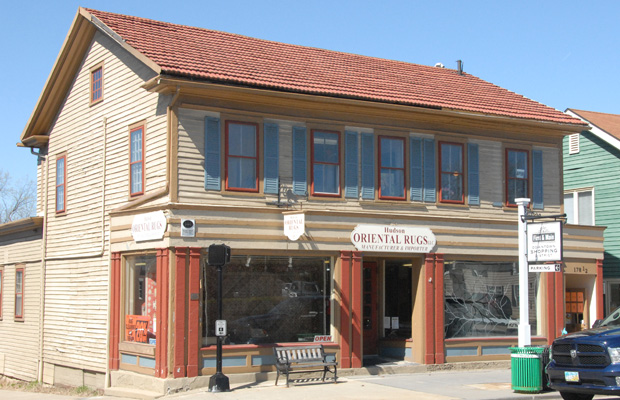 5. 178 North Main Street (1833), Walter Wright Store
5. 178 North Main Street (1833), Walter Wright Store
Originally built as the store and dwelling of the prominent Deacon Wright, this structure has been in commercial use since 1833.
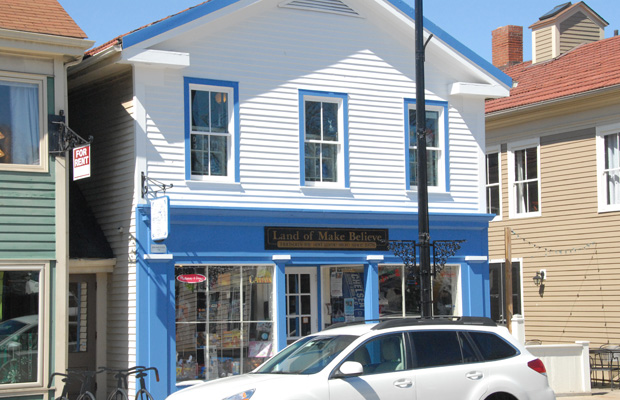 6. 190 North Main Street (1842), Hine-Farrar Shop
6. 190 North Main Street (1842), Hine-Farrar Shop
Original owner Robert Hine moved west to Indiana two years after his shop was built. Master tinner John Nutting Farrar made and sold stoves and tin items here for 45 years.
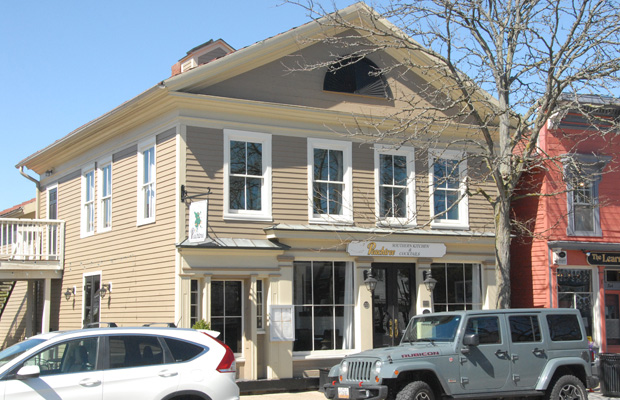 7. 200 North Main Street (1834), J.B. Whedon Store
7. 200 North Main Street (1834), J.B. Whedon Store
John Brown’s father Owen built this store for J.B. Whedon on land Brown owned. Later, it housed Charles Farrar’s general store, C.A. Campbell’s harness shop, a feed store, a hardware store and several clothing shops.
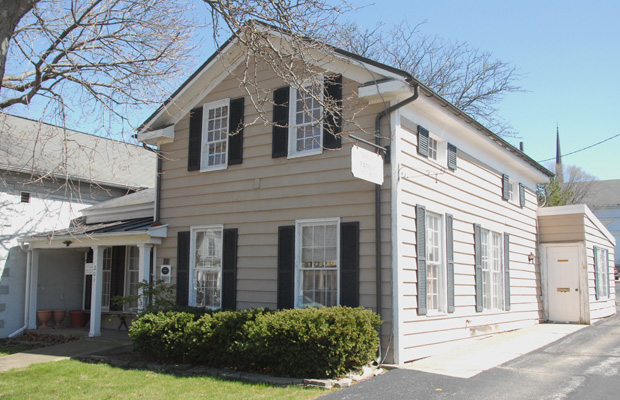 8. 201 North Main Street (1840), Hine-Fowler House
8. 201 North Main Street (1840), Hine-Fowler House
Built by one of the Hines brothers from Seymour, Connecticut, who sold it to carriage maker Chauncey Fowler. The Fowlers and their descendants lived there well into the 20th century.
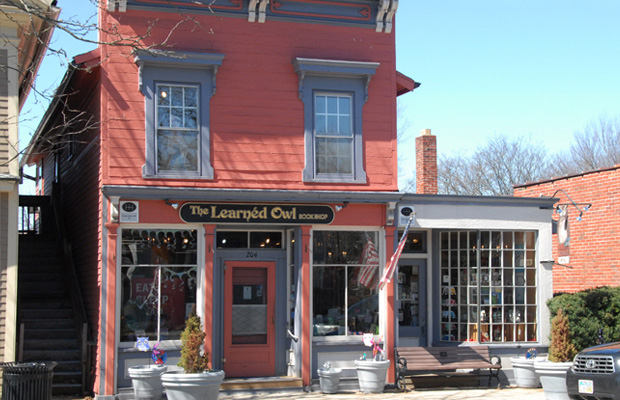 9. 202/204 North Main Street (1834), Noonan Shops
9. 202/204 North Main Street (1834), Noonan Shops
William Noonan built this large building for his carpentry shop, while his brother John repaired shoes next door.
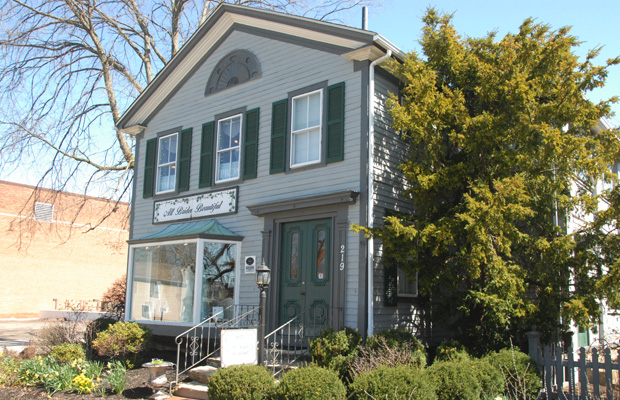 10. 219 North Main Street (1832), Wooden-Farrar House
10. 219 North Main Street (1832), Wooden-Farrar House
Elixius Wooden was a boot-maker and did a thriving business in the 1830s. Tinsmith John Nutting Farrar lived here, and it remained a residence for nearly a century, until returning to use as a shop in 1963.
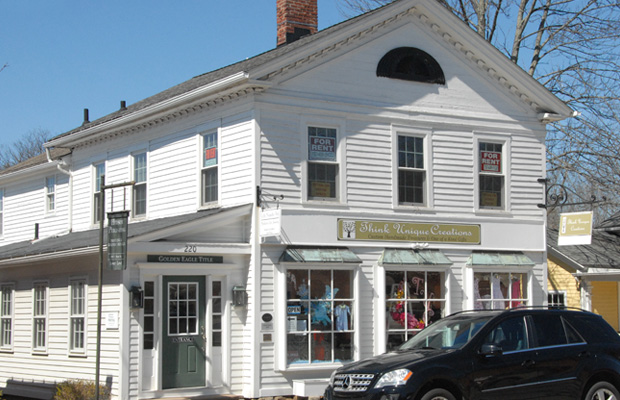 11. 220 North Main Street (1834), Titus Hand House
11. 220 North Main Street (1834), Titus Hand House
Built as a residence by Owen Brown for his daughter Marian and son-in-law Titus Hand, this house had many owners before 1868, when it was bought by C.A. Campbell, whose harness shop was down the block.
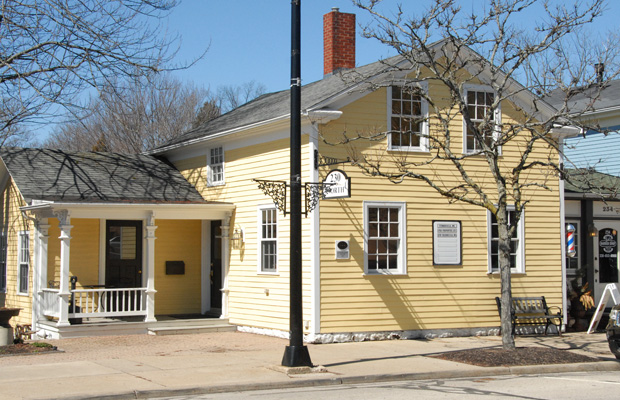 12. 230 North Main Street (1837), Austin-Lake House
12. 230 North Main Street (1837), Austin-Lake House
The English-born widow Lucy Hurn Lake joined relatives in Hudson and moved to this house in 1841. She made and sold clothes here for 34 years. Thomas Austin, who built the house, never lived in it.
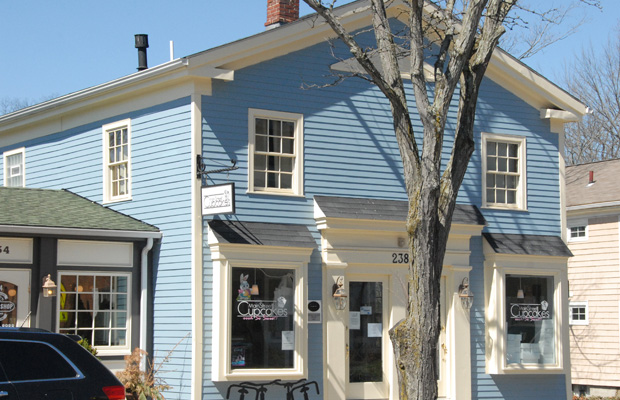 13. 238 North Main Street (1843), George Golden House
13. 238 North Main Street (1843), George Golden House
George Golden’s residence and business were entered by separate doors. When he died at an early age, his widow married the shoemaker Isaac Quay, who moved his shoe shop here.
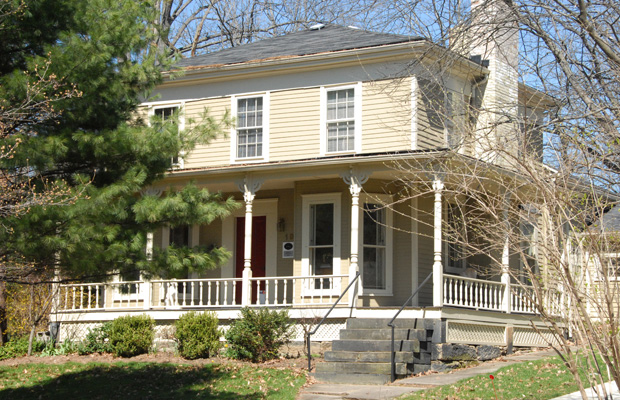 14. 19 Owen Brown Street (1852), Lindley-Brewster House
14. 19 Owen Brown Street (1852), Lindley-Brewster House
On land owned by Owen Brown, Isabel Lindley, an early settler and charter member of the Congregational Church, built a tiny house. A. A. Brewster added the large front section in 1852 when he acquired the property.
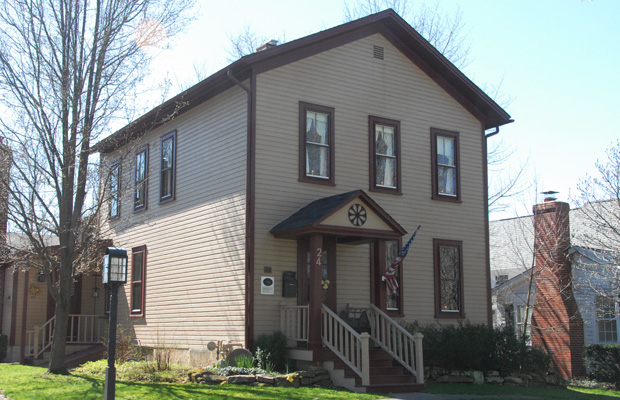 15. 24 Owen Brown Street (1880), William Branch House
15. 24 Owen Brown Street (1880), William Branch House
Coming to Hudson after the Civil War, former slave William Branch worked as a porter at Western Reserve College and built this house as well as several others. J.W. Ellsworth purchased the house in the early 1900s and extensively remodeled it.
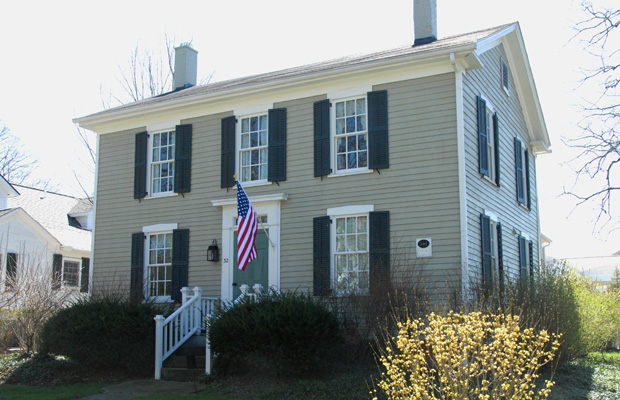 16. 32 Owen Brown Street (1852), Hurn-Bliss House
16. 32 Owen Brown Street (1852), Hurn-Bliss House
Built during the railroad boom, this house and 28 Owen Brown Street next door were investment properties for David Hurn, who came from England in 1833 with his relatives the Markillies, the Doncasters and Lucy Lake. All but the widow Lake made modest fortunes here. The Greek Revival and Gothic Revival neighbors, built by the same man within two years, show the variety of architectural styles popular at the time.
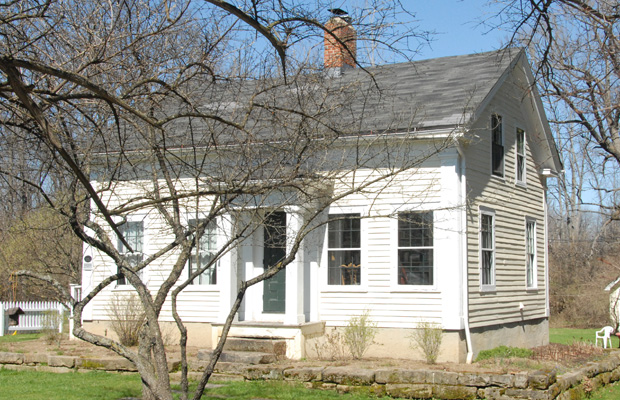 17. 63 Owen Brown Street (1835), Chloe Wright House
17. 63 Owen Brown Street (1835), Chloe Wright House
The first of three houses to be moved to this end of Owen Brown Street in the 1980s, this classic Greek Revival was brought from the property on Hudson-Aurora Road known for many years as the Grissom Farm. The other relocated houses are at 64 Owen Brown Street (1846) and 65 Owen Brown Street (1837).
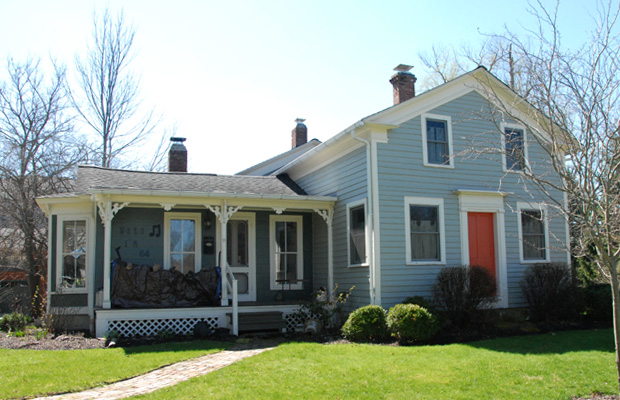 18. 64 Owen Brown Street (1840), Harrison Danforth House
18. 64 Owen Brown Street (1840), Harrison Danforth House
This Greek Revival house with a one-story side wing was moved to this site in 1984 from Darrowville, south of Hudson. The side wing was remodeled in the 1870s in the then-popular Victorian style. The large barn with cupola was moved from the same Darrowville farm.
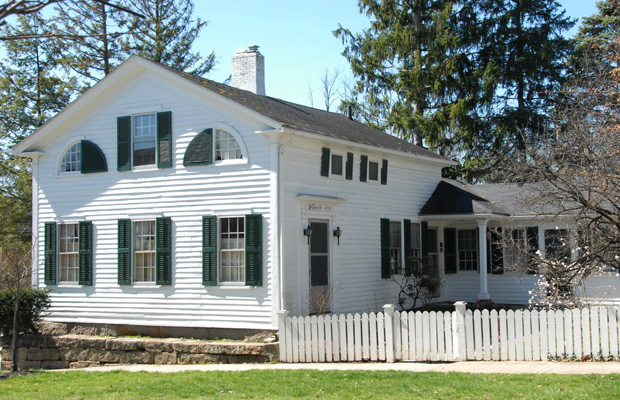 19. 252 North Main Street (1833), Wayside
19. 252 North Main Street (1833), Wayside
Merchant J. B. Whedon also served as postmaster in Hudson. First appointed in 1833, he had the small wing of this house built first so he could conduct postal business in it. The split fan window and beautiful exterior door surrounds are charming details.
 20. 253 North Main Street (1876), Wadsworth House
20. 253 North Main Street (1876), Wadsworth House
This Italianate-style house was built for blacksmith Nelson Wadsworth.
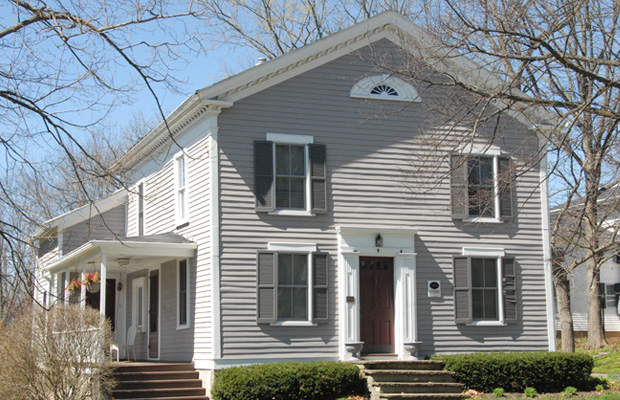 21. 258 North Main Street (1834), Brown-Strong House
21. 258 North Main Street (1834), Brown-Strong House
Built by Owen Brown for his son Oliver, this Greek Revival house was later home to Abolitionist preacher Ephriam Strong, whose daughter Mary ran the Hudson Female Seminary on the property. The front door surround is from plate 28 in Asher Benjamin’s “The Practical House Carpenter,” dated 1830.
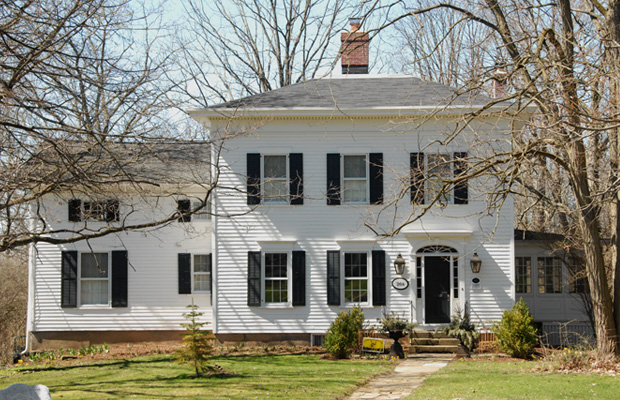 22. 264 North Main Street (1836), Van Humphrey House
22. 264 North Main Street (1836), Van Humphrey House
Everything about Judge Van Humphrey was larger than life: his physical stature, his standing in the political and social life of the Western Reserve and his temper. A Copperhead (a northern Democrat who opposed the Civil War), he once personally smashed the presses of a local Abolitionist newspaper. An early engraving of the house shows the original façade was taken from plans in the Minard Lefever pattern book. Lefever was an influential architect of churches and houses in the U.S. in the early 19th century.
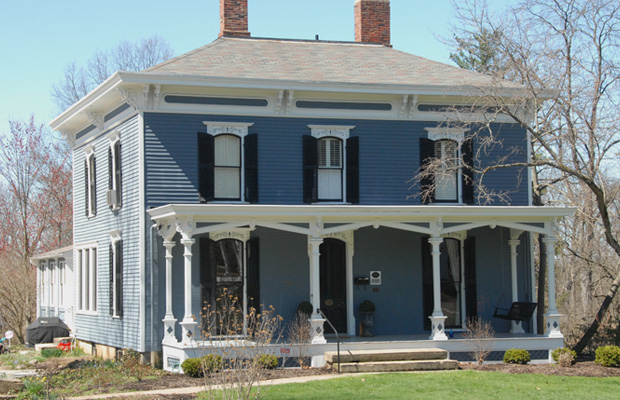 23. 278 North Main Street (1878), E. S. Gregory House
23. 278 North Main Street (1878), E. S. Gregory House
Edwin S. Gregory headed the preparatory school attached to Western Reserve College. His wife Clara, granddaughter of David Hudson, presided over village social life. This Italianate house was built on farmland owned by her parents.
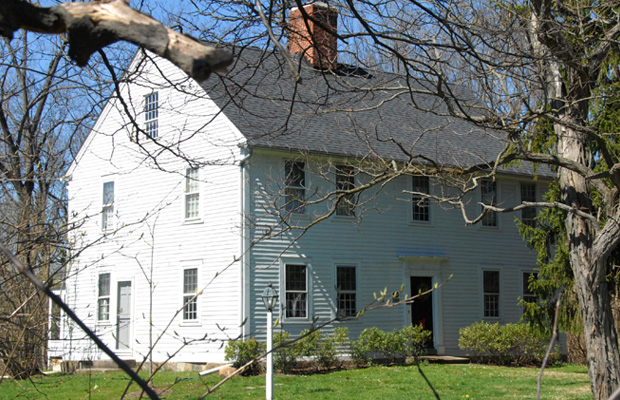 24. 318 North Main Street (1878), David Hudson House
24. 318 North Main Street (1878), David Hudson House
With its center chimney, this house built by founding father David Hudson reflects Hudson’s Connecticut heritage. The oldest house in Summit County, it served as town hall, church meeting house, post office and inn.